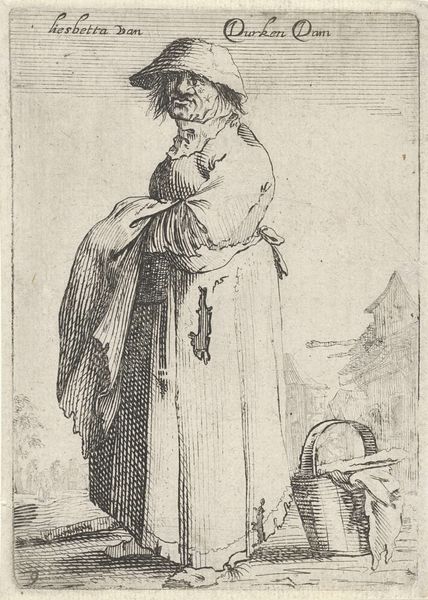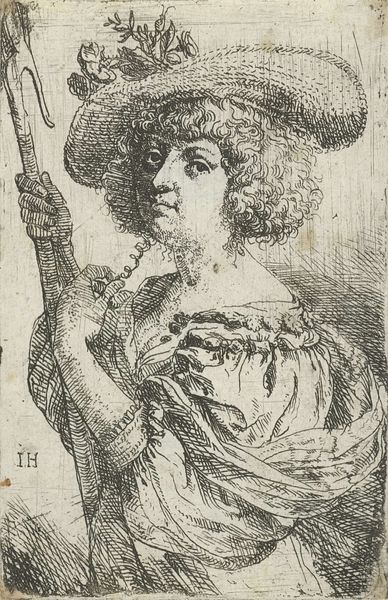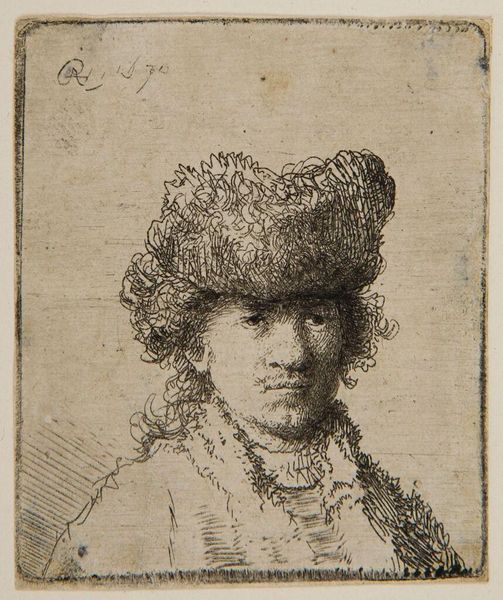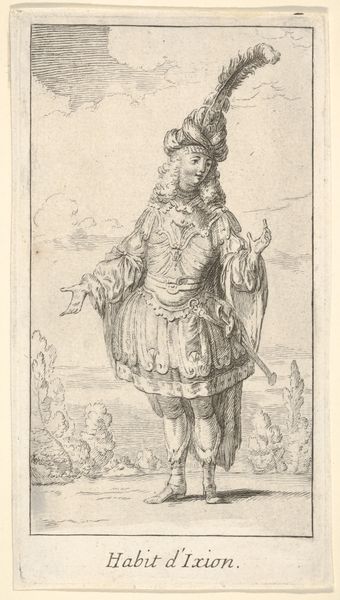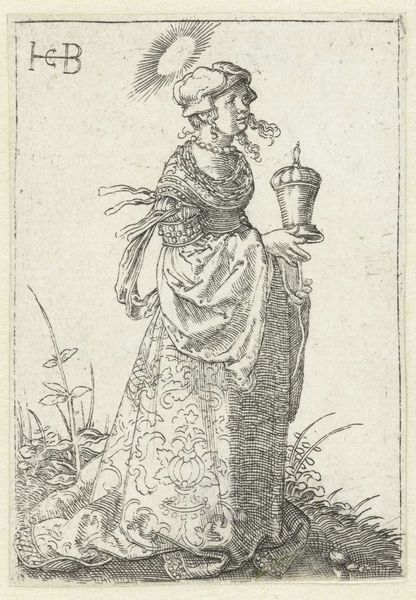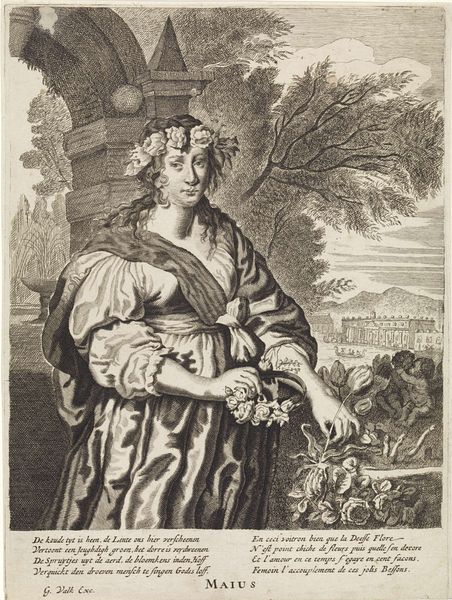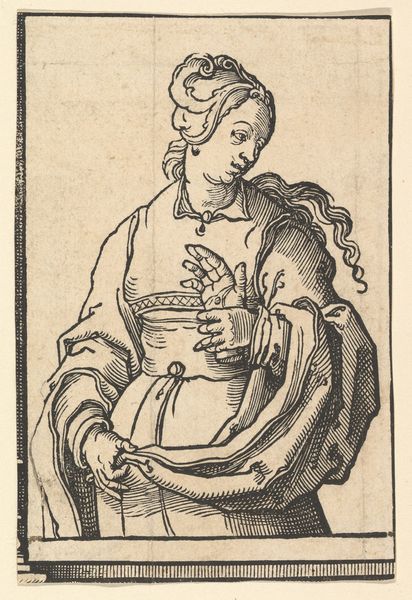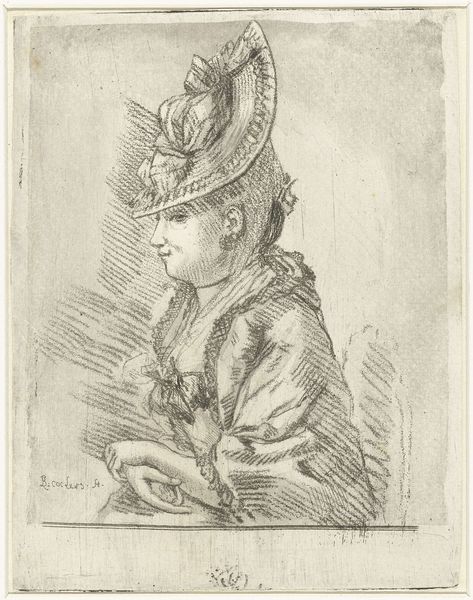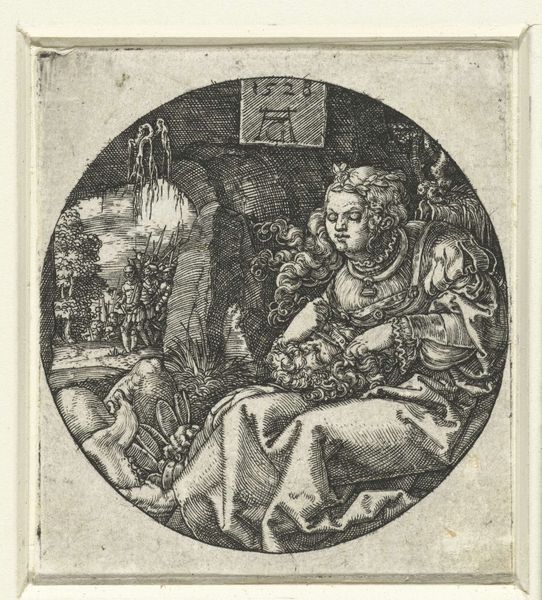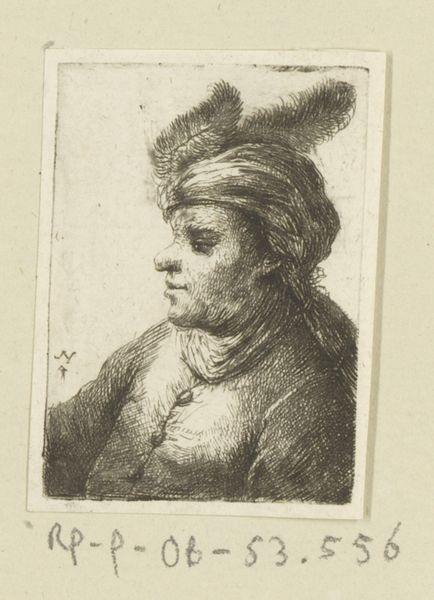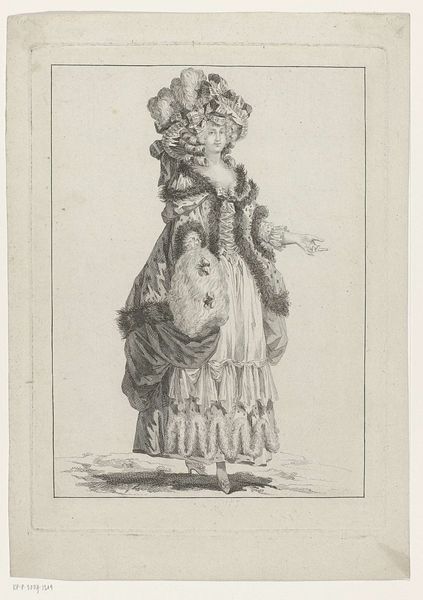
Dimensions: height 105 mm, width 79 mm
Copyright: Rijks Museum: Open Domain
Editor: So, this is *Mansbuste*, an etching by Abraham van Strij, dating from 1763 to 1826. The cross-hatching creates such depth, doesn’t it? It gives the piece a feeling of intimacy, like we’re peering into this man's private world. How do you interpret this work, especially considering the subject's attire? Curator: The flamboyant hat with the plume – for me, it immediately reads as a signifier of status, or perhaps aspiration. The subject seems to be deliberately projecting an image. But his expression, doesn't it suggest a tension beneath the surface? It hints at a struggle, a desire to embody a role that perhaps doesn't quite fit. Editor: Yes! The hat says one thing, but the slightly downturned mouth says another entirely. Do you think the details—like the collar or the tassels on his shirt—contribute to that sense of performativity? Curator: Precisely! Those elements evoke Baroque sensibilities, an embrace of theatricality. Remember, in portraiture, every detail functions as a symbol. The etching medium itself – the sharp lines, the contrast – speaks to a certain directness. Does it reveal more truth than the subject intended? Are we witnessing an individual caught between societal expectations and inner realities? What kind of cultural memories might he invoke? Editor: That's a fascinating point, about the tension between outward display and inner feeling. Maybe that tension is what makes the image so compelling even now. It invites speculation and wonder. Curator: Absolutely. And it reminds us that images aren’t simply representations, but active participants in shaping our understanding of ourselves and others. We both keep digging below surface presentations to arrive at greater truths!
Comments
No comments
Be the first to comment and join the conversation on the ultimate creative platform.

